| Type | Standard / Implementation Specification | Standards Process Maturity | Implementation Maturity | Adoption Level | Federally required | Cost | Test Tool Availability |
|---|---|---|---|---|---|---|---|
|
Standard for observations
|
Final
|
Production
|
No
|
Free
|
N/A
|
||
|
Standard for observation values
|
Final
|
Production
|
Yes
|
Free
|
N/A
|
| Limitations, Dependencies, and Preconditions for Consideration |
Applicable Value Set(s) and Starter Set(s)
|
|---|---|
|
|
Comment
Submitted by abigail.zenzen on
Passive exposure
If passive exposure if important enough to be captured should we have an option of passive exposure - former smoker to go with passive exposure never smoked. Or is the former smoker the status that should be used. If a patient has not smoked for 25 years but are exposed to smoke daily which is more important to the patient's health? The option of passive exposure- never smoker is not an accurate description.
Submitted by SCLC_UCSF on
Smoking Status Documentation in the Electronic Health Record
Electronic Health Records (EHRs) have provided an accessible platform for physicians and other medical staff to share patient information and tailor treatment more effectively. In regards to smoking cessation, EHRs include smoking status questions, and the responses can be shared with the patient’s care team and quitline staff to better understand the individual’s frequency of use, readiness to quit, and history of related medication and/or counseling.
Despite EHRs’ applicability for improved communication between health professionals and overall treatment of the patient, health care providers and systems have repeatedly faced a challenge in how the smoking status is documented in the EHR using SNOMED CT codes. The primary concern regarding the SNOMED CT EHR smoking status classifications is that the response choices are not mutually exclusive, creating overlap and confusion at the point of care when smoking status is documented. A few examples of confusion include vagueness of the frequency in which a “some day” smoker is identified, as well as “heavy” and “light” smokers, and the period of time since quitting for an individual to be defined as a “former smoker.” The same definitions for each category need to be used by all clinical staff for accurate identification of an individual’s smoking status and appropriate treatment for their level of smoking.
Given the overall benefit that EHRs can provide with clearly defined and non-duplicative smoking status classifications, we believe that the current SNOMED CT EHR smoking status classifications should be replaced with the following:
- Current Every Day Smoker
- Current Some Day Smoker
- Former Smoker
- Never Smoker
- Smoking Status Unknown
In addition, we strongly suggest that ONS creates clear definitions for the smoking status classifications in order to avoid confusion among clinical/medical staff during documentation.
Respectfully Submitted,
Smoking Cessation Leadership Center
Submitted by ClearWay Minnesota on
Simplify Smoking Status Classifications in the EHR
All healthcare providers and institutions play an important role in addressing tobacco use. Evidence-based clinical practice guidelines exist to assist with tobacco use interventions and to consistently assess and address tobacco use with patients. A key health systems change strategy for addressing tobacco and to improve care delivery processes includes identifying all tobacco users at every visit using a system-wide identification system (see, Fiore MC, Jaén CR, Baker TB, et al. Treating Tobacco Use and Dependence: 2008 Update. Clinical Practice Guideline. Rockville, MD: U.S. Department of Health and Human Services. Public Health Service. May 2008.).
Research shows that the use of EHRs can support routine clinical smoking cessation protocols and documentation. (See Moody-Thomas S, Nasuti L, Yi Y, Celestin MD, Horswell R, Land TG, Effect of systems change and use of electronic health records on quit rates among tobacco users in a public hospital system, Am J Public Health, 2015;105 Suppl 2:e1-7’ and Boyle R, Solberg L, Fiore M, Use of electronic health records to support smoking cessation, Cochrane Database Syst Rev. 2011;12:CD008743). Therefore, a template with clear smoking status recommendations will be a valuable tool for many health systems and clinics.
The current choices for documenting smoking status in most EHRs are overlapping and duplicative, frequently resulting in confusion at the point of care. This has been a source of frustration for many clinicians and health systems with which we’ve worked. It is important to simplify and reduce the smoking status classifications in order to make them clear and non-duplicative. A universal template and set of classifications will help eliminate confusion, maximize valid data collection and support quality improvement initiatives.
To simplify the current status classifications, our recommended smoking status classification is:
|
Current Every Day Smoker |
|
Current Some Day Smoker |
|
Former Smoker |
|
Never Smoker |
|
Smoking Status Unknown |
Thank you for considering this recommendation.
David J. Willoughby, M.A.
Chief Executive Officer
ClearWay Minnesota(SM)
Submitted by smockn on
ONC Proposed Interoperability Standards Advisory (ISA)
I recommend smoking status classifications to be the following:
Current Every Day Smoker
Current Some Day Smoker
Former Smoker
Never Smoker
Smoking Status Unknown
Please see my letter attached.
Submitted by smockn on
Dear ONC,…
Dear ONC,
As a physician scientist with my research focus on smoking cessation, I recommend to simplify and reduce the smoking status choices by removing overlapping smoking status classifications, and presenting clear, non-duplicative smoking status choices.
Please see my letter attached.
Sincerely,
Li-Shiun Chen, M.D., M.P.H., Sc.D.
Associate Professor of Psychiatry
Washington University School of Medicine in St. Louis
Campus Box 8134, 660 South Euclid Avenue
St. Louis, Missouri 63110
li-shiun@wustl.edu; Phone: 314-362-3932; Fax: 314-362-4247
Submitted by carolzawacki on
current smoker…
current smoker
former smoker
never smoker
smokeless tobacco use
there is no safe level of cigarette use so why does it matter if someone is a some day smoker
protocol is to ask each patient every time about tobacco so "unknown" should not be allowed
Submitted by lromitoc on
Smoking Status Documentation in the EHR
Our group includes researchers, academicians in the area of tobacco, and tobacco dependence treatment counselors. We concur with ATTUD member Rob Adsit and colleagues who advocate to:
- Simplify and reduce the smoking status choices/classifications.
- Remove overlapping smoking status classifications.
- Recommended clear, non-duplicative smoking status classifications.
- Use new smoking status classifications as follows:
- Current Every Day Smoker
- Current Some Day Smoker
- Former Smoker
- Never Smoker
- Smoking Status Unknown
In addition, our suggestions and comments also include the following:
- Simplified list [5 (above) vs. 8] is definitely better.
- Whatever is decided, the classifications should map to ICD-10 or whatever standardized diagnostic codes are appropriate.
- Concurrent other tobacco and e-cigarette use is not captured with these suggested classifications.
- Question language is needed that allows the provider to funnel the patient according to these suggested categories and best solicit true answers. There is currently no consensus on measurement with regards to how this is conducted.
- If cigarette use is on the decline, there should be thought given to how overall substance use/abuse is addressed in health/social histories.
- Research suggests documentation of tobacco using classifications/codes is less frequent than tobacco use documentation occurring in the progress notes. If there is a way that categories can be automatically assigned as the provider asks the patient questions?
Recent papers:
Challenges with Collecting Smoking Status in Electronic Health Records
https://www.ncbi.nlm.nih.gov/pmc/articles/PMC5977725/
Validating the use of veterans affairs tobacco health factors for assessing change in smoking status: accuracy, availability, and approach
Submitted by ra1@ctri.wisc.edu on
Simpler, non-overlapping Smoking Status classifications
Thank you for the opportunity to provide input on Smoking Status documentation in the EHR.
The major concern with the current smoking status classifications is that the choices are not mutually exclusive, creating overlap and confusion at the point of care when smoking status is documented.
Overlap and confusion is created by:
- Vagueness of “some day” smoker (i.e. what frequency?).
- Vagueness of “heavy” and “light” smoker (i.e. number of cigarettes/day).
- Vagueness of “former smoker” (i.e. how long since quit?).
- Each patient is documented with one smoking status which creates overlap:
- “Current every day smoker” and “light smoker”.
- “Current every day smoker” and “heavy smoker”.
- “Current some day smoker” and “light smoker”.
- Uncertainty that all clinical staff who are identifying and documenting patient smoking status are using consistent definitions for each category.
In an effort to clarify and streamline “Smoking Status” documentation, we recommend that ONC simplify and promote non-overlapping criteria for smoking status documentation in the EHR. The clear, non-duplicative smoking status classifications that we recommend for the ONC ISA and EHR Certification Program are:
|
Smoking Status |
SNOMED CT Code |
|
Current Every Day Smoker |
449868002 |
|
Current Some Day Smoker |
428041000124106 |
|
Former Smoker |
8517006 |
|
Never Smoker |
266919005 |
|
Smoking Status Unknown |
266927001 |
We fully support the continuation of smoking status being documented for each patient age 13 years old and older.
Michael Fiore, MD, MPH, MBA Robert Adsit, MEd
Professor of Medicine, Director Director of Education and Outreach
University of Wisconsin School of Medicine and Public Health Center for Tobacco Research and Intervention
Submitted by nar1 on
Smoking status documentation in the electronic health record
The Massachusetts General Hospital’s Tobacco Research and Treatment Center is a multidisciplinary team that pairs tobacco dependence treatment counselors who provide service to smokers cared for in our 1100-bed teaching hospital with academic researchers studying effective ways to deliver tobacco cessation interventions in health care settings.
The current Smoking status EHR classifications are overlapping and duplicative, causing confusion and discouraging clinical staff from filling them out. A simpler, non-overlapping set of responses is needed.
We concur with ATTUD member Rob Adsit and colleagues who advocate to:
- Simplify and reduce the smoking status choices/classifications.
- Remove overlapping smoking status classifications.
- Recommended clear, non-duplicative smoking status classifications.
We advocate for a slightly simpler version. We propose a new smoking status classification set as follows:
- Current Smoker
- Former Smoker
- Never Smoker
- Smoking Status Unknown
Nancy Rigotti, MD,
Professor of Medicine, Harvard Medical School, Director, Tobacco Research and Treatment Center, Massachusetts General Hospital


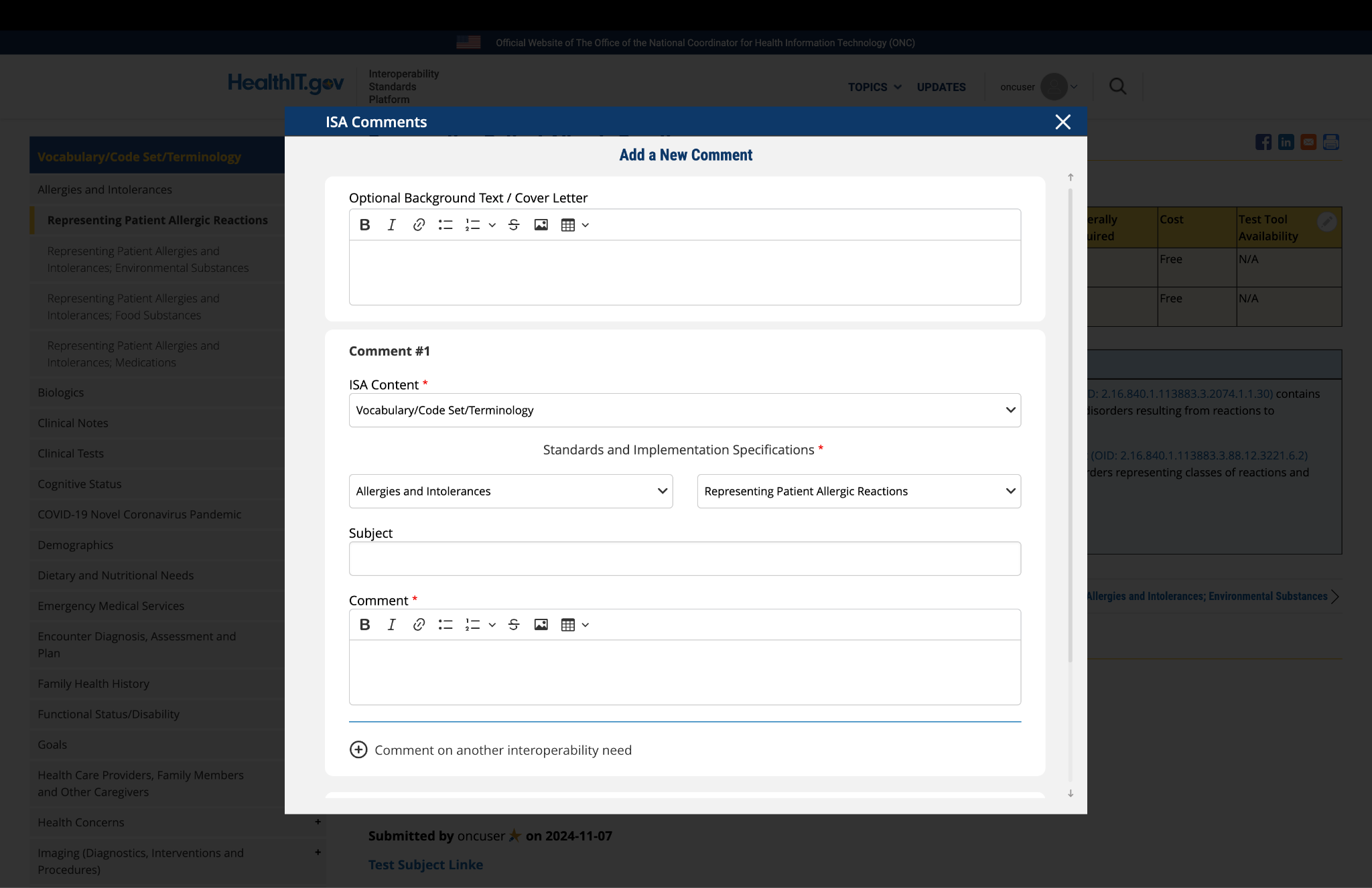

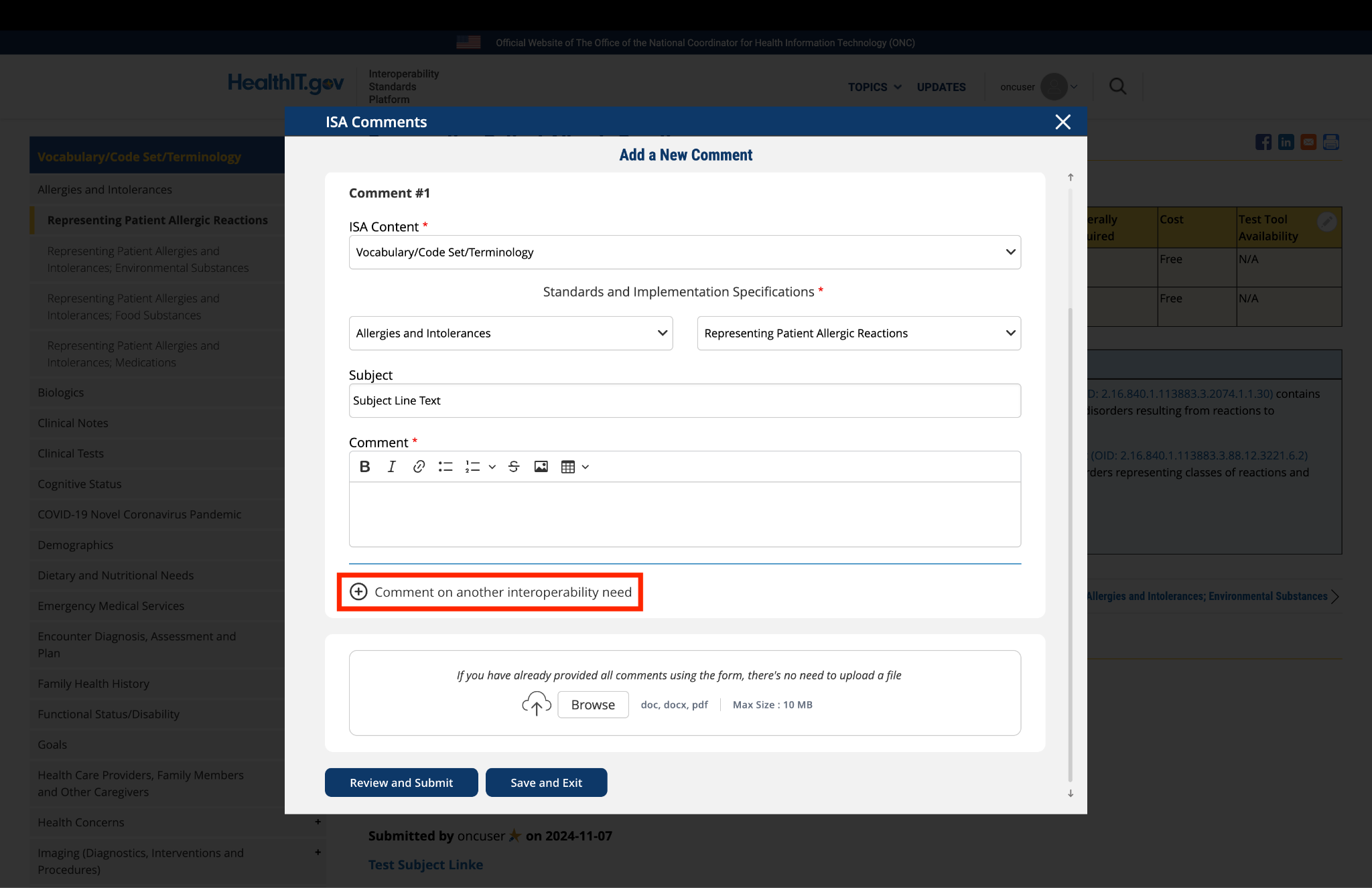
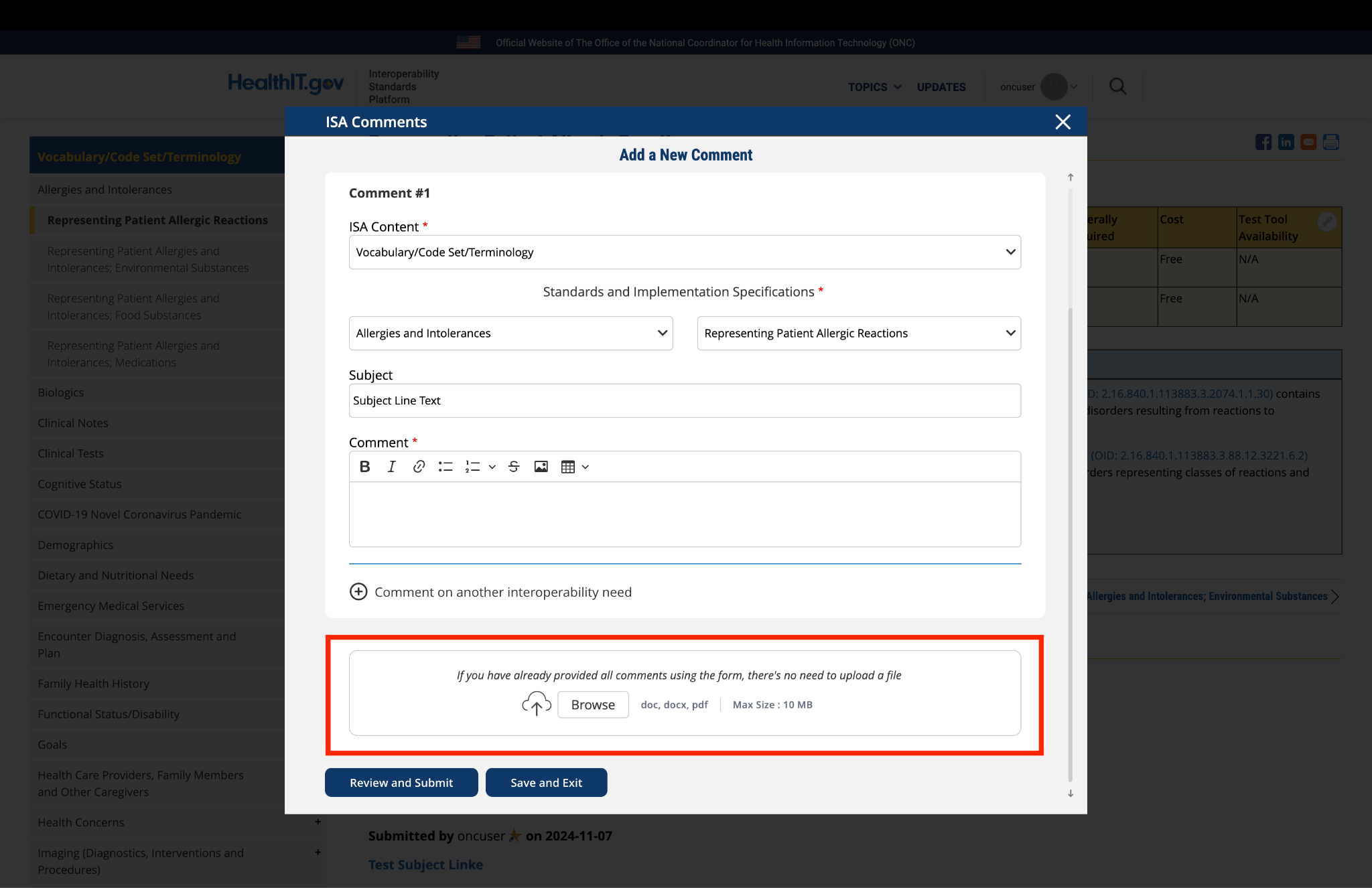
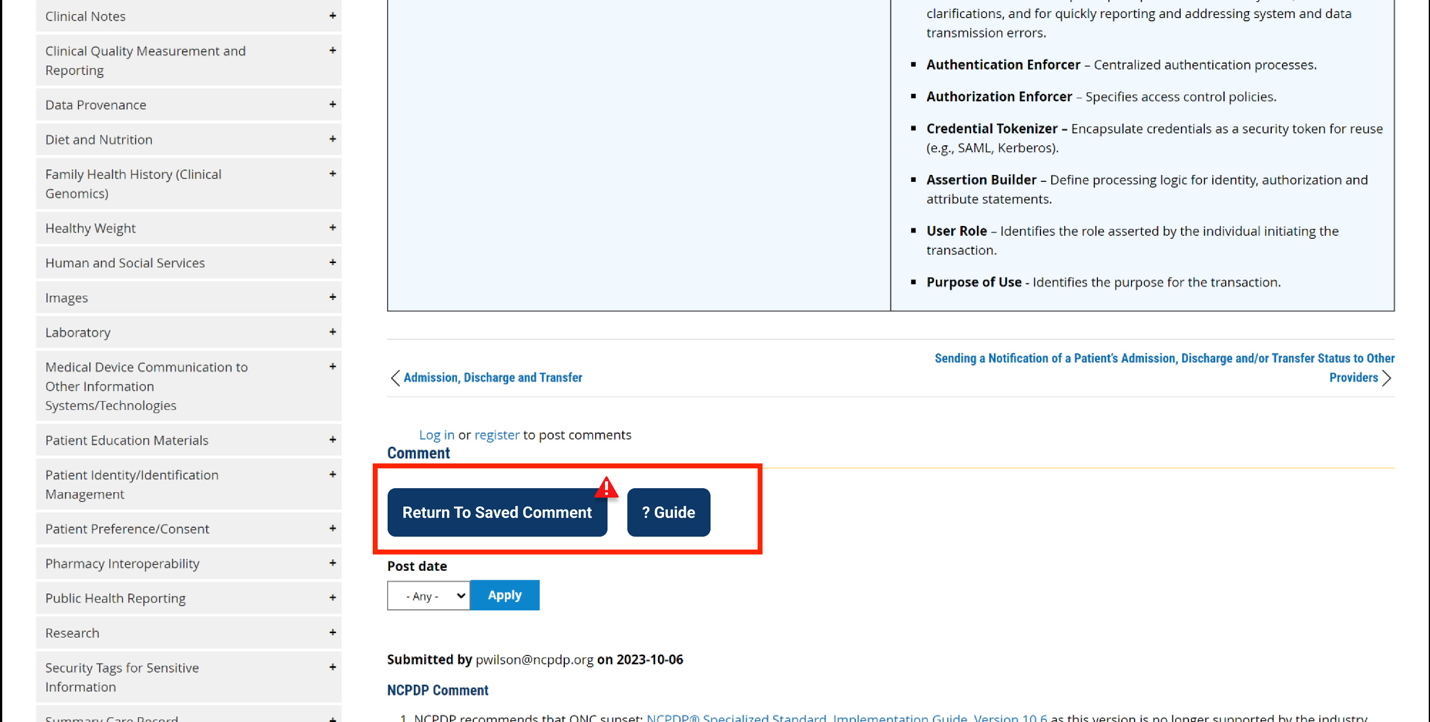
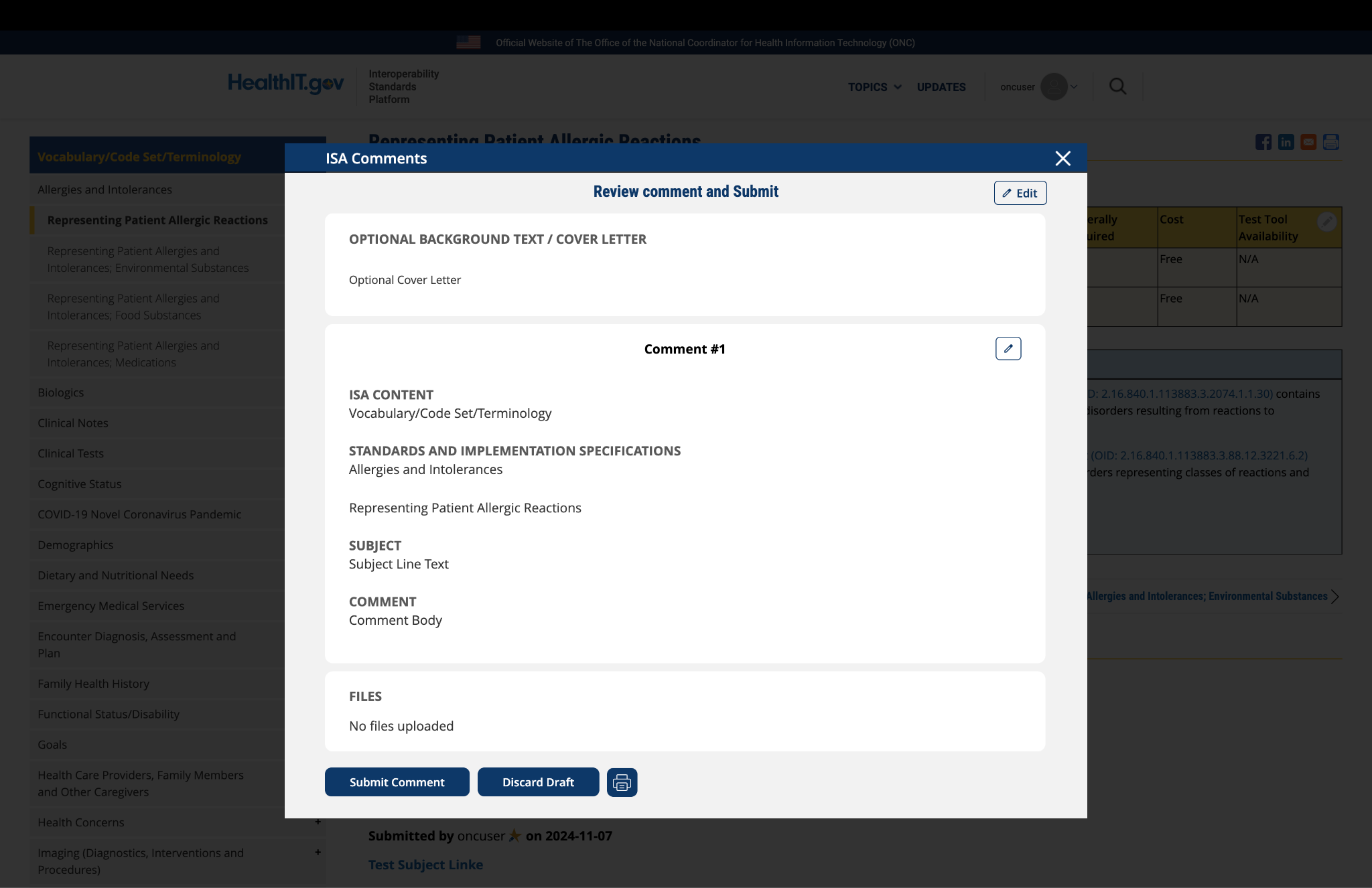
Submitted by ViTAL on
Smoking Status Documentation in the Electronic Health Record
On behalf of the Vanderbilt Center for Tobacco, Addiction and Lifestyle (ViTAL Center), headed by Dr. Hilary Tindle, we are grateful for the opportunity to submit written comments on the Interoperability Standards Advisory (ISA), specifically on “Recording Smoking Status” in the electronic health record (EHR).
Currently, the categories of smoking status commonly used by EHRs, coded by Systematized Nomenclature of Medicine Clinical Terms (SNOMED CT), can cause confusion for clinical staff, especially those without a dedicated background in tobacco treatment. As they stand, the categories are duplicative (“Current some day smoker” and “light smoker”, for example) and some of the categories (“Heavy smoker”, for example) are not well-defined, inviting inconsistent use across users.
We write to recommend the ISA be updated by reducing the number of smoking status classifications by removing overlapping categories, as well as simplify the choices by removing categories that are not clearly defined or provide little clinical utility. Our suggestion for new categories are: Current Every Day Smoker, Current Some Day Smoker, Former Smoker, Never Smoker, and Smoking Status Unknown. This new structure removes the overlapping “current smoker” categories of Light Smoker and Heavy Smoker as well as simplify the choices for when a patient’s smoking status is unknown.
Additionally, for any set of smoking status classifications, we recommend that there be clear guidance provided on the use of any classification choice. For example, how many days per week (or month) should constitute an every day vs. some day smoker; while the answer to this seems to be clear, the population of patients that smoke 25 days out of a month may be more similar in phenotype to every day smokers than some day or intermittent smokers. Another example is defining former smokers by how long they have remained quit; it may not be appropriate for someone who quit yesterday to be classified as a former smoker along with the person quit for 25 years.
Thank you again for the opportunity to provide comment and we hope you will consider these concerns and recommendations.